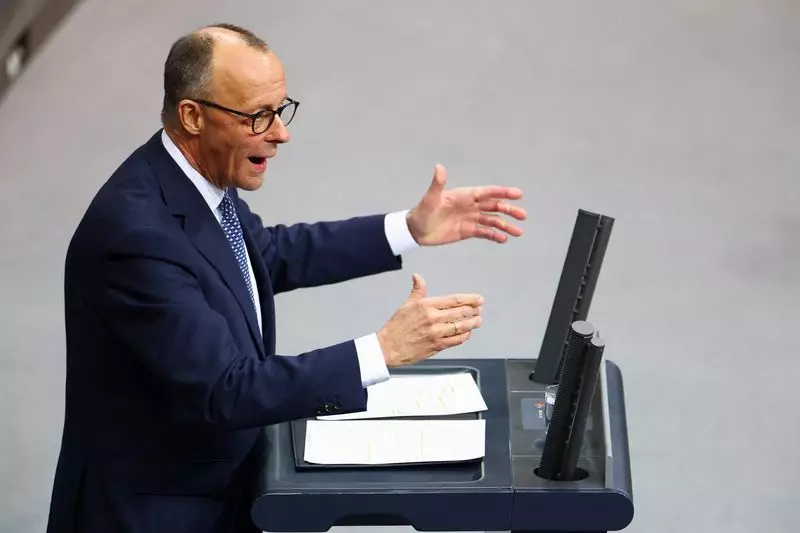Germany finds itself at a pivotal moment in its history, grappling with a series of socio-economic challenges that threaten to destabilize its position as Europe’s premier economy. The recent collapse of Chancellor Olaf Scholz’s three-party coalition has opened a pathway for significant political change, and the stakes are exceptionally high as the country approaches a snap election scheduled for February 23. As political parties prepare to unveil their manifestos, Germany stands at a crossroads, with competing visions set to be presented to the electorate in a bid to rejuvenate a struggling economy amidst rising discontent.
Economic Challenges and Party Responses
The looming specter of economic decline is palpable as Germany braces for a second consecutive year of contraction. Major industrial players, most notably Volkswagen, are confronted with fierce competition from foreign rivals that could potentially reshape the landscape of the German automotive sector. In this environment, the major political parties are poised to respond with their electoral platforms focusing on key issues such as taxation, welfare policies, and investment strategies. Friedrich Merz, the leader of the Christian Democratic Union (CDU) and the frontrunner, has articulated proposals for tax cuts aimed at alleviating burdens on both income and corporate sectors. This strategy includes plans for reduced electricity costs to bolster economic activity.
However, this approach has not come without its critics, particularly those concerned about the sustainability of adhering to Germany’s debt brake—a fiscal tool designed post-2009 financial crisis to limit government borrowing. Merz’s commitment to this policy raises questions about potential constraints on growth and public investment that many believe are crucial for revitalization during these challenging economic times.
In contrast, the Social Democrats (SPD) under Scholz are advocating for reforms that ensure government investment capabilities, with proposals to incentivize private sector participation and improve infrastructure through an ambitious, off-budget initiative. The touted “Made in Germany” premium seeks to reinvigorate domestic production and stimulate local economies—themes that resonate well with constituents increasingly weary of economic stagnation.
As Germany navigates its political future, the situation in Ukraine has emerged as a contentious topic within the upcoming election campaigns. Under the tenure of Chancellor Scholz, Germany has elevated its defense spending, positioning itself as a significant military ally to Ukraine, second only to the United States. However, conservative factions, led by Merz, are advocating for more aggressive military support, including the controversial proposal of supplying Taurus missiles—a move that Scholz fears could escalate Germany’s involvement in direct hostilities with Russia.
Conversely, the far-right Alternative for Germany (AfD) party is gaining popularity by advocating for a complete halt to military assistance to Ukraine, alongside a push to restore diplomatic relations with Moscow. This polarization echoes broader societal sentiments, as public opinion diverges on how Germany should engage with the ongoing conflict, highlighting an electorate divided on foreign policy and national security.
Migration remains one of the most volatile issues within the upcoming electoral discourse. Germany’s initial hospitality towards refugees during the 2015 migrant crisis has recently morphed into a more stringent approach characterized by re-implemented border checks. The incoming political platforms will invariably address migration policies—Merz has proposed more restrictive measures, advocating for the rejection of certain migrant applications and the establishment of third-party processing facilities for asylum seekers.
This evolving narrative underscores an underlying shift in public sentiment toward migrants and refugees as economic pressures mount, complicating the integration dialogue. It reflects not only on the political landscape but also on the social cohesion of German society as it confronts an influx of migration amidst domestic economic concerns.
With a snap election on the horizon and various parties sharpening their messages, Germany finds itself at a critical juncture. The manifestos presented will not only reveal their strategies for economic recovery and social stability but will also test the country’s capacity to navigate complex foreign relations and domestic challenges. As the electorate prepares to make momentous decisions, the unfolding narratives will likely shape Germany’s political and economic trajectory for years to come. This election encapsulates the very essence of democratic engagement, reflecting the populace’s aspirations and anxieties in a transformative period.

